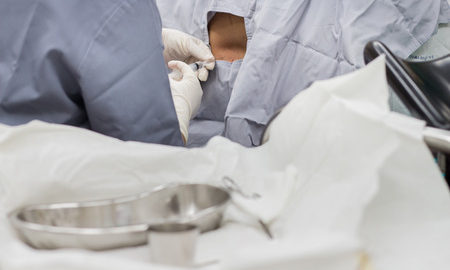A Small Study Proves the Potential of Stem Cell Therapy to Reverse Paralysis

As stem cell research and treatment has significantly accelerated in past years, it has garnered as much support as controversy. Opponents of experimental stem cell treatments cite the fact that most stem cell studies are small and cannot be generalized to wider populations, but supporters of stem cell therapies point to the undeniable success the small studies boast. Asterias Biotherapeutics Inc. is now offering yet another small study with a 100 percent success rate to add to the conversation.
Stem Cell Therapy Helps Five out of Five Paralyzed Patients
Asterias Biotherapeutics Inc. developed and lead this study using human embryonic stem cells. Embryonic stem cells are the most controversial type of stem cells, but also some of the most effective, because they can be grown to form many other tissue types, even the oligodendrocytes that support and protect nerves.
This study experimented the impact of spinal stem cell injections on five patient volunteers, all of whom suffered from spinal cord injuries and paralysis. According to Asterias’ chief scientific officer Jane Lebkowski, Asteria believes that injecting stem cells into the spinal column can limit and even reverse the nerve damage that causes paralysis and debilitation. Unlike most stem cells trials, which seek to replace damaged tissue with new tissue, Asteria doesn’t have its sights set on generating new nerves in patients with spinal cord injuries. Instead, the company believes that the stem cell injections can prevent existing nerves from dying.
A handful of patients in the trial were injected with a smaller dose of five million stem cells, and a total of five patients received a higher injection of ten million cells. Patients with the smaller injection did not show as much improvement, but those who received ten million stem cells all demonstrated improved motor functions like feeling and control of arms, hands, and fingers. This is an enormous accomplishment with 100 percent success rate, and Asteria is eager for Charles Liu, director of the University of Southern California’s Neurorestoration Center in Los Angeles, to present the study’s results at the 55th Annual Scientific meeting of the International Spinal Cord Society held in Vienna this month.
Asterias Saved the Trial
Back in 1998, the biotech company Geron was pioneering the way toward stem cell research by sponsoring research regarding the original discovery of human embryonic stem cells. Geron’s 2010 attempt to utilize embryonic stem cells medically resulted in a canceled program due to safety. Asterias ultimately purchased that project, with irony because Asterias’ parent company BioTime is led by Geron’s former CEO, Michael West, who clearly still has his eye on the prize.
By 2014, Asterias had won $14.3 million from the California Institute of Regenerative Medicine to begin its current spinal cord injury trial. The results are incredibly promising, but require a blinded study, with some patients receiving the treatments and some patients receiving a placebo, to determine the true scientific effect of stem cells on paralysis. Assuming that Asterias can continue to make progress and prove the power of stem cells on spinal cord injuries, millions of people around the world could potentially regain the freedom of movement.
Resources:
http://www.bloomberg.com/news/articles/2016-09-14/asterias-stem-cell-therapy-helps-paralyzed-people-in-small-study


